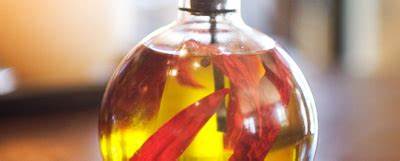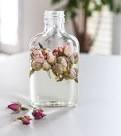The Hard pHacts - Hydrosols









The Hard pHacts - Hydrosols
Science is strong on description; we know so little that scientists make discoveries everywhere they look. But each discovery merely reveals the magnitude of our ignorance. David Suzuki, The Sacred Balance
Science is strong on description; we know so little that scientists make discoveries everywhere they look. But each discovery merely reveals the magnitude of our ignorance. David Suzuki, The Sacred Balance. Hydrosols, unlike most essential oils, have a finite shelf life.
Although it is true that some oils, notably the conifer and expressed citrus oils, do have a shelf life of around two years, most of the oils will, if stored correctly, last indefinitely. Some like patchouli, vetiver, sandalwood, and the resin extracts like myrrh and frankincense, can actually improve with age, like fine wine. However, hydrosols are a different kettle of fish, and we must develop a new way of thinking to fully understand their needs.
Establishing and monitoring the shelf life of hydrosols has, until now, been largely a matter of experience combined with guesswork. The result has been that if a distiller or seller of hydrosols actually gives them a best-before date, it seems to be regardless of bottling standards, storage conditions, or plant-material source.
Some people say one year on everything, others say three years on everything- they can't both be right, and they're not. Each hydrosol is totally unique, just like the oil and plant from which it is derived. The shelf life of each hydrosol is also unique and is affected considerably by storage conditions, packaging, and a few chemistry factors.
When I started working with hydrosols, I wasn't much concerned with the issue of shelf-life of hydrosols or contamination. I bought only from reliable sources, and as hydrosols were even harder to find then than they are now, these were just about the only sources for most of the varieties that were of interest.
I also kept them in the fridge, bottled mostly to order, and sterilized my packaging. I figured that if any contamination was present, I would surely see it in the water. And see it I did, although not very often. But it was Bay laurel hydrosol that made me start to think about the issue of shelf life-that and the frequent questions of colleagues who wondered if I didn't have contamination problems.
At first I put down the concern of my colleagues to the fact that one of the great fictions of aromatherapy is that hydrosols are really unstable and nearly always full of contaminants like mould. This really is a fiction. Of course hydrolates, like any natural substance without preservatives, can develop bacteria, and they do go off. But-and here is the important thing-they are not that unstable for the most part.
Take Roman Chamomile, for instance. Early on I started buying chamomile by the gallon. It is a lovely and sweet and has so many uses that I figured I could sell it quickly enough to justify buying what was then large bulk to me. Of course, I was wrong. That first gallon of chamomile did not go fast, but the second took over eighteen months to sell, and it never changed one iota during the whole time. The taste, the smell, look or pH was not altered in any way. So what was the problem with this contamination malarkey, I thought to myself. Then came bay leaf.
Whenever I get a new variety of hydrosol I always do a three-week protocol myself to see what happens and to gauge the physiological, emotional, and vibrational response within the body. Over three weeks one consumes 620 millilitres of hydrosol: 30 millilitres a day for twenty one days. So I always buy at least a couple of litres to allow for experimentation. But with bay the results seemed so good and the health benefits so palpable that I went for the gallon and then watched in amazement as it started to bloom after five months in the fridge. I called the supplier and checked the distillation date, which was around ten months previous. What was going on, I wondered, why did chamomile last and bay degrade.
I had to rethink everything, and soon I realized that I had lumped all hydrosols together as far as stability was concerned, just as we tend to lump most essential oils together in the same regard. I realized that every hydrolate was unique and probably had a specific shelf life. Eventually I realized that the individual pH was the key to understanding the whole problem.
Because of this, the easiest, most effective method to determine and monitor shelf life is to measure the pH value of the waters. Each hydrosol has a unique pH or a pH range into which it will fall. This may vary from year to year and is affected by all the same conditions that affect the essential oils: weather, altitude, harvest times, and so on. They have chemotypes: different countries of origin, and variability in yield, chemistry, taste and aroma, just as oils do, and this is important to remember. However, the pH is a reliable indicator of the potential life span of a hydrosol-it is not the only relevant parameter, but it is the easiest to measure for the home user or small distributor, and except for a few anomalies, it is a very reliable standard.
In the future I hope that distillers will start testing the pH of the waters during the distillation process so an absolute value or range can be assigned to each and every hydrosol produced, year after year. This will be an extremely valuable sales tool for producers, distributors, and practitioners, as you will see by the end of this chapter.
It will also be fascinating to to see the differences in pH and therefore effects, aroma, taste, and so on of hydrosols produced in different years by the same distillers in different areas or countries. Until then, you can use the pH table supplied in chapter 2 as a starting point. The data are based on my own tests conducted over the last three and one-half years and are an accurate reference for good-quality organic wild-crafted therapeutic products.
Note; If you know about pH, you will know that each tenth of a point on the scale represents a factor of ten; thus some of the pH ranges presented for hydrosols actually represent quite high variables in actual pH. Chemists out there may find these ranges too wide, and in a way, so do I, but as the ratings are based on averages of hydrosols received over a four-year period, from any sources and of many species, this is accurate as I can be at the moment.
Also, as these are natural compounds, their values change from season to season, from country to country, and of course, because distillation methods. It is better to have a normal range to work from than a finite value that may not be applicable to your next batch.
Reference; Hydrosols; The next Aromatherapy: Suzanne Catty
Calamus Root/Sweet Flag - ACORUS CALAMUS






Calamus Root/Sweet Flag - ACORUS CALAMUS
Aroma and Taste
Highly unusual. One of the strangest odours you will ever encounter and a case of love it or hate it for most people. It is a peculiarly masculine aroma, and certainly it's preferred by men more than by women; perhaps that's why it's used in perfumery, to attract men!
Stability and Shelf Life
Stable,easily lasts eighteen mon this, probably reliably for two years.
Properties and Applications
Canadian calamus contains none of the hepatotoxic ketone beta-asarone, making it completely safe for use in aromatherapy both internally and externally. European and Asian calamus contain high levels of beta-asarone and should not be used for aromatherapy.
Calamus is a specific for the liver and can be used with Greenland moss in topical compresses and poultices for liver infections and dysfunction and hepatitis. French aromatherapy experiments by Dominique Baudoux with both topical and internal use of these two essential oils have yielded some very promising results in treating tumors and cancers in the liver, and the hydrosols are worth further exploration.
A seven day test of Aromatic Tincture of milk thistle and calamus-root hydrosol worked wonderfully well in detoxifying the liver and gallbladder, and it is certainly nicer and easier to take as a treatment than the better-known lemon and olive oil gallbladder cleanse and appears to be similarly effective.
Calamus is best known in perfumery, where it is used as a fixative and base note. The hydrosol makes a gently astringent aftershave on its own or combined with sandalwood, cedarwood or bay laurel. My father reacted more positively to calamus than to any other aroma I have ever offered him; he practically grabbed it out of my hand and declared, " That's what I want in an aftershave!" He got it.
Reference: Hydrosols: The Next Aromatherapy: Suzanne Catty
Yarrow - Achillea millefolium - Hydrosols













Yarrow - Achillea millefolium - Hydrosols
Aroma and Taste
Strongly aromatic but not particularly pleasant; has been described as puppy breath." Absolutely not floral in aroma or taste. The flavour is better than the smell but not by a lot, and it tastes better in stronger dilution than in weaker ones.
Stability and Shelf Life
Stable to very stable; can last up to two years, although it may develop a grey colour and fine particulate matter after about fourteen months. Check the pH if you have any doubts.
Properties and Applications
One metric ton of yarrow flowers produces less than five hundred milliliters (one-half liter) of oil so this is perhaps one of the more potent hydrosols. It is a good digestive aid and is significantly detoxifying, but in a gentle manner. A three-week will improve digestion, increase elimination, and calm gastric spasms and rumbles and is recommended as part of a cleanse or weight-loss program.
It improves digestion of fatty foods and seems to have hepato-stimulant and/or cholagogue (bile releasing) properties, since it can quickly relieve indigestion and heartburn caused by overindulgence.
Yarrow is antispasmodic for the digestive, reproductive, and muscular systems, used topically or internally. Cooling, it helps reduce fever and eases aches and pains in association with flu and colds. It is anti-inflammatory and can be used as a compress with cypress for varicose veins and in a sitz bath for hemorrhoids and excessive or painful menstrual periods or postpartum healing.
A great balancer both physically and mentally, yarrow stabilizes body fluids and gets rid of excess water without being overly diuretic. Use it in a compress on its own or in combination with goldenrod for fluid in joints and rheumatic pain or for any area of swelling where fluid has accumulated.
A mild antibacterial and antiseptic, it helps with problem skin, acneic conditions, and dermal infections and as an anti-inflammatory it helps heal damages from the sun and wind. Effective for cleaning wounds , it helps stop bleeding and could be used as an aftershave for its styptic properties, although because of its odour, you may wish to blend it with other, more pleasingly aromatic waters.
Yarrow is a good ingredient to use in a douche or sitz bath for endometriosis , in synergy with Cistus. This condition is quite serious , but hydrosols and oils can greatly reduce the severity and pain of the condition. This can reduce the need for opiate-based pharmaceuticals, which are commonly the only option.
Yarrow is a very effective water for use on animals , as they like the smell. Skin problems and digestive issues benefit particularly. For some the aroma is off-putting. In this case, combine yarrow with other hydrosols and essential oils that improve its fragrance. This water provides mental calm and can help on find peace. Like the oil. it is highly energetic and good for spiritual or distance work. Combine it with Juniper berry for cleansing the aura, crystals, and work space.
Reference: Hydrosols - The New Aromatherapy : Suzanne Catty
Balsam Fir - Abies balsamea - Hydrosols














Balsam Fir - Abies balsamea - Hydrosols
AROMA and TASTE
A woody taste and fragrance. Slightly musty and simultaneously wet and dry in smell. The taste is slightly flat and better in warm, sweetened drinks than in cold beverages.
STABILITY and SHELF LIFE
Stable; good for fourteen to sixteen months, although the aroma starts to fade around twelve months.
PROPERTIES and APPLICATIONS
Balsam fir is the best-known "Christmas" tree and comes into its own in the dark months of winter. Recommended primarily for external applications, although some internal use id fine, but I do not recommend the three-week internal protocol.
A good general system tonic, balsam fir is antiseptic and seems to boost the immune system. It is of great benefit to suffers of SAD (Seasonal affective disorder); just smelling it can lift me from the winter gloom! Add it to the bath or shower ( put the plug in); use one-fourth to one-half cup two to three times a week.
A significant improvement is usually noticed after the first week. It is an excellent addition to bath or foot soaks at any time of the year, being neither heating nor cooling but still able to stimulate the system.
Balsam fir is both mucolytic and expectorant for the respiratory, renal, and reproductive systems. Use in inhalations, saunas, steam baths, humidifiers, and compresses. It is a good gargle or tea for the winter.
Mildly diuretic, it can also help remove fluid from joints and is a good topical compress for rheumatic, arthritic, muscular, and joint pain. It is gently stimulating to circulation while calming the mind, being energetically expansive and opening.
For congestion, use balsam fir in a compress, on its own or in combination with essential oils. follow with a rub of essential oils including balsam fir; wrap up the chest with a warm, dry cloth and go to bed.
This can be repeated several times a day.
For joint or muscle pain, use hot or cold compress to the individual and the condition.
Reference: Hydrosols: The Next Aromatherapy: Suzanne Catty
Articles - Most Read
- Home
- What are Hydrosols
- What are Hydrosols-2
- The Monographs
- How to Make a Hydrosol
- Table of Common Latin Names and pH Values - F - O
- Distilled or Extracted Specifically For Therapeutic Use - 3
- Kurt Schnaubelt
- What isn't a Hydrosol?
- Table of Common Latin Names and pH Values - P - S
- Wholly Water!
- Blue Babies
- Supply and Demands
- Mature Skin
- Recipes Alpha F
- Hydrosols In The Marketplace
- Chemicals: Friends or Foes?
- Hemorrhoids
- Nelly GrosJean
- Water as Medicine
- The Educated Consumer
- Genitically Modified Plants
- Influences
- Water Quality
Articles-latest
- Daucus carota/Wild Carrot Seed - pH 3.8-4.0
- Cupressus sempervirens/ Cypress-pH3.5-3.7
- Coriandrum sativum/Coriander Herb-and-Seed
- Comptonia peregrinal/Sweet Fern- pH 3.8
- Citrus clementine (fe) Clementine Petitgrain- pH 4.3-4.4
- Citrus aurantium var. amara (flos) /Neroli Orange Blossom-pH3.8-4.5
- Cistus ladaniferus/Rock Rose-pH 2.9-3.1
- Cinnamomum zeylanicum (ec) Cinnamon Bark-pH3.3
- Chamaemelum nobile/Roman Chamomile - pH 3.0-3,3
- Centaurea cyanus/Cornflower/Bachelor's Button-pH 4.7-5.0
- Cedrus atlantical/Cedarwood/Atlas Cedar-pH 4.1- 4.2
- Hydrosols -The PH - Anomalies
- Hydrosols- Establishing Shelf Life and Stability
- Boswellia carterii/FRANKINCENSE
- Asarum canadense/ Wild Ginger/Canadian Ginger
- Artemesia vulgaris / Artemesia
- ARTEMESIA DRACUNCULUS - TARRAGON
- Angelica archangelica / Angelica Root - Hydrosols
- The Key, or More Correctly, the pH - 2 - Hydrosols
- The Key, or More Correctly, the pH-Hydrosols
- The Hard pHacts - Hydrosols
- Calamus Root/Sweet Flag - ACORUS CALAMUS
- Yarrow - Achillea millefolium - Hydrosols
- Balsam Fir - Abies balsamea - Hydrosols

